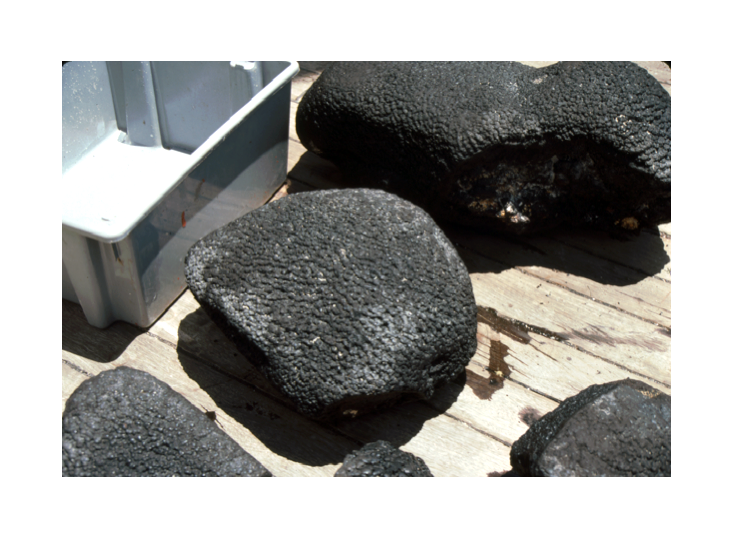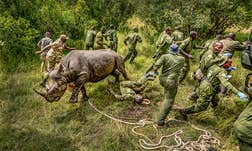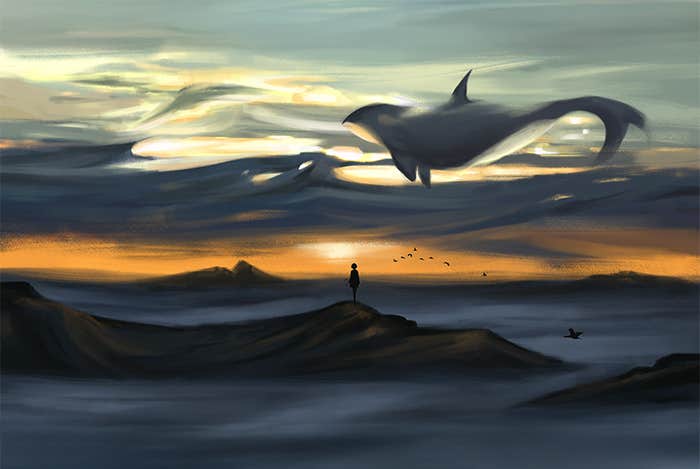In February 1987, Neil Gehrels, a young researcher at NASA’s Goddard Space Flight Center, boarded a military plane bound for the Australian Outback. Gehrels carried some peculiar cargo: a polyethylene space balloon and a set of radiation detectors he had just finished building back in the lab. He was in a hurry to get to Alice Springs, a remote outpost in the Northern Territory, where he would launch these instruments high above Earth’s atmosphere to get a peek at the most exciting event in our neck of the cosmos: a supernova exploding in one of the Milky Way’s nearby satellite galaxies.
Like many supernovas, SN 1987A announced the violent collapse of a massive star. What set it apart was its proximity to Earth; it was the closest stellar cataclysm since Johannes Kepler spotted one in our own Milky Way galaxy in 1604. Since then, scientists have thought up many questions that to answer would require a front row seat to another supernova. They were questions like this: How close does a supernova need to be to devastate life on Earth?
Back in the 1970s, researchers hypothesized that radiation from a nearby supernova could annihilate the ozone layer, exposing plants and animals to harmful ultraviolet light, and possibly cause a mass extinction. Armed with new data from SN 1987A, Gehrels could now calculate a theoretical radius of doom, inside which a supernova would have grievous effects, and how often dying stars might stray inside it.
To understand just how supernovas affected life, scientists needed to link the timing of their explosions to pivotal events on earth such as mass extinctions or evolutional leaps.
“The bottom line was that there would be a supernova close enough to the Earth to drastically affect the ozone layer about once every billion years,” says Gehrels, who still works at Goddard. That’s not very often, he admits, and no threatening stars prowl the solar system today. But Earth has existed for 4.6 billion years, and life for about half that time, meaning the odds are good that a supernova blasted the planet sometime in the past. The problem is figuring out when. Because supernovas mainly affect the atmosphere, it’s hard to find the smoking gun,” Gehrels says.
Astronomers have searched the surrounding cosmos for clues, but the most compelling evidence for a nearby supernova comes—somewhat paradoxically—from the bottom of the sea. Here, a dull and asphalt black mineral formation called a ferromanganese crust grows on the bare bedrock of underwater mountains—incomprehensibly slowly. In its thin, laminated layers, it records the history of planet Earth and, according to some, the first direct evidence of a nearby supernova.

These kinds of clues about ancient cosmic explosions are immensely valuable to scientists, who suspect that supernovas may have played a little-known role in shaping the evolution of life on Earth. “This actually could have been part of the story of how life has gone on, and the slings and arrows that it had to dodge,” says Brian Fields, an astronomer at the University of Illinois at Urbana-Champaign. But to understand just how supernovas affected life, scientists needed to link the timing of their explosions to pivotal events on earth such as mass extinctions or evolutional leaps. The only way to do that is to trace the debris they deposited on Earth by finding elements on our planet that are primarily fused inside supernovas.
Fields and his colleagues named a few such supernova-forged elements—mainly rare radioactive metals that decay slowly, making their presence a sure sign of an expired star. One of the most promising candidates was Fe-60, a heavy isotope of iron with four more neutrons than the regular isotope and a half-life of 2.6 million years. But finding Fe-60 atoms scattered on the Earth’s surface was no easy task. Fields estimated that only a very small amount of Fe-60 would have actually reached our planet, and on land, it would have been diluted by natural iron, or been eroded and washed away over millions of years.
The crusts’ growth is one the slowest processes known to science—they put on about five millimeters every million years.
So scientists looked instead at the bottom of the sea, where they found Fe-60 atoms in the ferromanganese crusts, which are rocks that form a bit like stalagmites: They precipitate out of liquid, adding successive layers, except they are composed of metals and form extensive blankets instead of individual spires. Composed primarily of iron and manganese oxides, they also contain small amounts of almost every metal in the periodic table, from cobalt to yttrium.
As iron, manganese, and other metal ions wash into the sea from land or gush from underwater volcanic vents, they react with the oxygen in seawater, forming solid substances that precipitate onto the ocean floor or float around until they adhere to existing crusts. James Hein at the United States Geological Survey, who studied crusts for more than 30 years, says that it remains a mystery exactly how they establish themselves on rocky stretches of seafloor, but once the first layer accumulates, more layers pile on—up to 25 centimeters thick.
That enables crusts to serve as cosmic historians that keep records of seawater chemistry, including the elements that serve as timestamps of dying stars. One of the oldest crusts, fished out by Hein southwest of Hawaii in the 1980s, dates back more than 70 million years, to a time when dinosaurs roamed the planet and the Indian subcontinent was just an island in the ocean halfway between Antarctica and Asia.
The crusts’ growth is one the slowest processes known to science—they put on about five millimeters every million years. For comparison, human fingernails grow about 7 million times faster. The reason for that is plain math. There’s less than one atom of iron or manganese for every billion molecules of water in the ocean—and then they must resist the pull of passing currents and the power of other chemical interactions that might pry them loose until they get trapped by the next layer.
Unlike the slow-growing crusts, however, supernova explosions happen almost instantly. The most common type of supernova occurs when a star runs out of its hydrogen and helium fuel, causing its core to burn heavier elements until it eventually produces iron. That process can take millions of years, but the star’s final moments take only milliseconds. As heavy elements accumulate in the core, it becomes unstable and implodes, sucking the outer layers inward at a quarter of the speed of light. But the density of particles in the core soon repels the implosion, triggering a massive explosion that shoots a cloud of stellar debris out into space—including Fe-60 isotopes, some of which eventually find their home in ferromanganese crusts.

The first people to look for the Fe-60 in these crusts were Klaus Knie, an experimental physicist then at the Technical University of Munich, and his collaborators. Knie’s team was studying neither supernovas nor crusts—they were developing methods for measuring rare isotopes of various elements—including Fe-60. After another scientist measured an isotope of beryllium, which can be used to date the layers of the crusts, Knie decided to examine the same specimen for Fe-60, which he knew was produced in supernovas. “We are part of the universe and we have the chance to hold the ‘astrophysical’ matter in our hand, if we look at the right places,” says Knie, who is now at the GSI Helmholtz Center for Heavy Ion Research.
Knie’s new tool gives scientists the ability to date other, possibly more ancient, supernovas that may have passed in the vicinity of Earth, and to study their influence on our planet.
The crust, also plucked from the seafloor not far from Hawaii, turned out to be the right place: Knie and his colleagues found a spike in Fe-60 in layers that dated back about 2.8 million years, which they say signaled the death of a nearby star around that time. Knie’s discovery was important in several ways. It represented the first evidence that supernova debris can be found here on Earth and it pinpointed the approximate timing of the last nearby supernova blast (if there had been a more recent one, Knie would have found more recent Fe-60 spikes.). But it also enabled Knie to propose an interesting evolutionary theory.
Based on the concentration of Fe-60 in the crust, Knie estimated that the supernova exploded at least 100 light-years from Earth—three times the distance at which it could’ve obliterated the ozone layer—but close enough to potentially alter cloud formation, and thus, climate. While no mass-extinction events happened 2.8 million years ago, some drastic climate changes did take place—and they may have given a boost to human evolution. Around that time, the African climate dried up, causing the forests to shrink and give way to grassy savanna. Scientists think this change may have encouraged our hominid ancestors as they descended from trees and eventually began walking on two legs.
That idea, as any young theory, is still speculative and has its opponents. Some scientists think Fe-60 may have been brought to Earth by meteorites, and others think these climate changes can be explained by decreasing greenhouse gas concentrations, or the closing of the ocean gateway between North and South America. But Knie’s new tool gives scientists the ability to date other, possibly more ancient, supernovas that may have passed in the vicinity of Earth, and to study their influence on our planet. It is remarkable that we can use these dull, slow-growing rocks to study the luminous, rapid phenomena of stellar explosions, Fields says. And they’ve got more stories to tell.
Julia Rosen is a science writer based in Portland, Oregon. Her stories have appeared in the Los Angeles Times, Science News, and EARTH Magazine. Before becoming a writer, Julia did a Ph.D. in geology; she studied bubbles of air trapped in polar ice cores.

Lead composite image credit: Pinwheel-Shaped Galaxy by NASA, ESA, The Hubble Heritage Team, (STScI/AURA) and A. Riess (STScI) and Red Sea Coral Reef by Wusel700


























